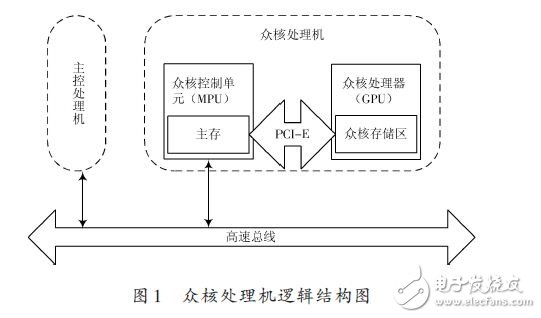0 Preface
In complex applications such as aerospace, medical services, and geological exploration, the amount of data that needs to be processed is dramatically increasing, requiring high-performance real-time computing capabilities to provide support. Compared with multi-core processors, many-core processors have higher computing resource density, significantly lower on-chip communication overhead, and significantly higher performance/power ratios, providing powerful computing power for real-time systems.
In complex application areas, the requirements for computing may vary from application to scenario. For example, when a mobile robot is working, it may need to perform multiple tasks such as path planning and target recognition at the same time. These tasks need to be performed simultaneously. When processing remote sensing images, image data needs to be registered, merged, reconstructed, and extracted. Waiting for multiple steps, these steps need to be performed at the same time, and there are predecessors and subsequent relationships. Therefore, the dynamic construction of computing modes based on many-core processors has become a new research direction to adapt to different application scenarios and application tasks. Literature [1] studied the many-core processor architecture with logical core construction capability. The basic idea is to build a coarse-grained logic core based on multiple fine-grained processor cores, and convert the increasing processor core into a single-threaded string. Performance improvements for line applications. The literature proposes and verifies a reconfigurable many-core processor structure based on the class-like data flow driven model, and realizes the runtime reconfigurable mechanism of the logical core processor. In this paper, an adaptive scheduling algorithm supporting dynamic grouping of nuclear resources is proposed. By splitting and merging the task clusters, the core logical group of elastic partitions can be dynamically constructed to realize the isolated and optimized access of nuclear resources.
GPGPU (General - Purpose CompuTIng on Graphics Processing Units) as a typical multi-core processor, the research is directed to the optimization of single-task concurrent execution and the acceleration of application algorithms. This paper uses GPGPU as a platform to construct a multi-computation mode processing system for single-task parallel, multi-task parallel and multi-task stream processing through research and design.
1 many nuclear processor
1.1 many nuclear processor structure
The many-core processor is built based on the combination of the many core control unit (MPU) and the multi-core processor (GPGPU). The logical structure is shown in Figure 1. The many-core processor consists of a multi-core control unit and a many-core computing unit. The many-core control unit uses an X86-structured MPU and is interconnected with a many-core computing unit via a PCI-E bus.

LED downlight is application of a new type of LED Light source on the basis of traditional tube light of the development of improved products, compared with traditional tube light has the following advantages: energy saving, low carbon, long life, good color rendering and fast response.
LED Downlight, a design more beautiful light, installation to keep building decoration of the overall unity and perfect, does not destroy the set of lamps and lanterns, light hidden inside the building decoration, light source is not exposed, no glare, the visual effect of soft and uniform
The common LED downlight are:led recessed downlight, wall-mountable LED downlight.Both LED downlights are suitable for shopping malls, office building , hotels, homes , conference rooms and exhibition spaces and so on.
LED Downlight
LED Downlight,Aluminium LED Downlight,LED Dimmable Downlight,Round LED Downlight
Wenzhou Korlen Electric Appliances Co., Ltd. , https://www.korlenelectric.com